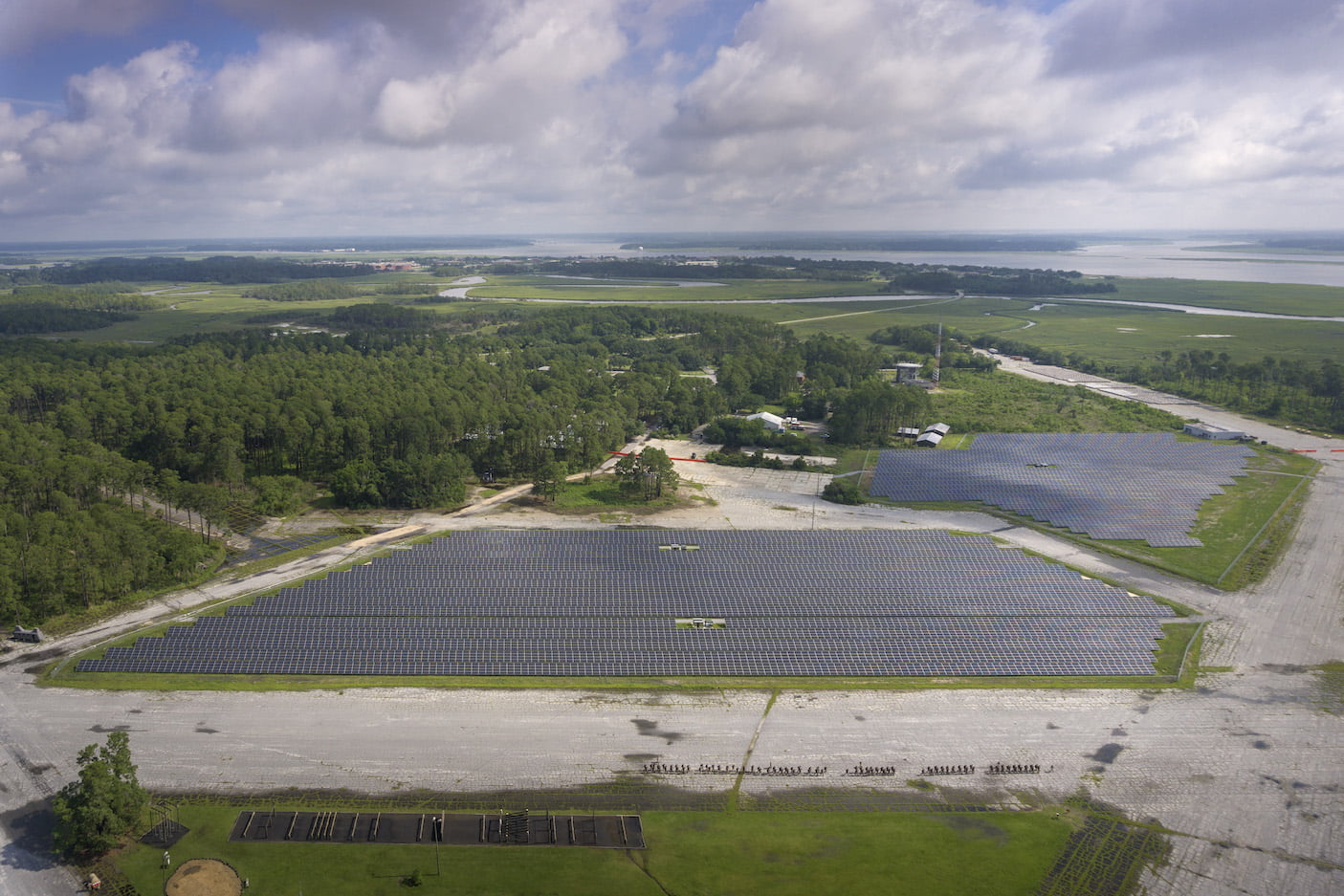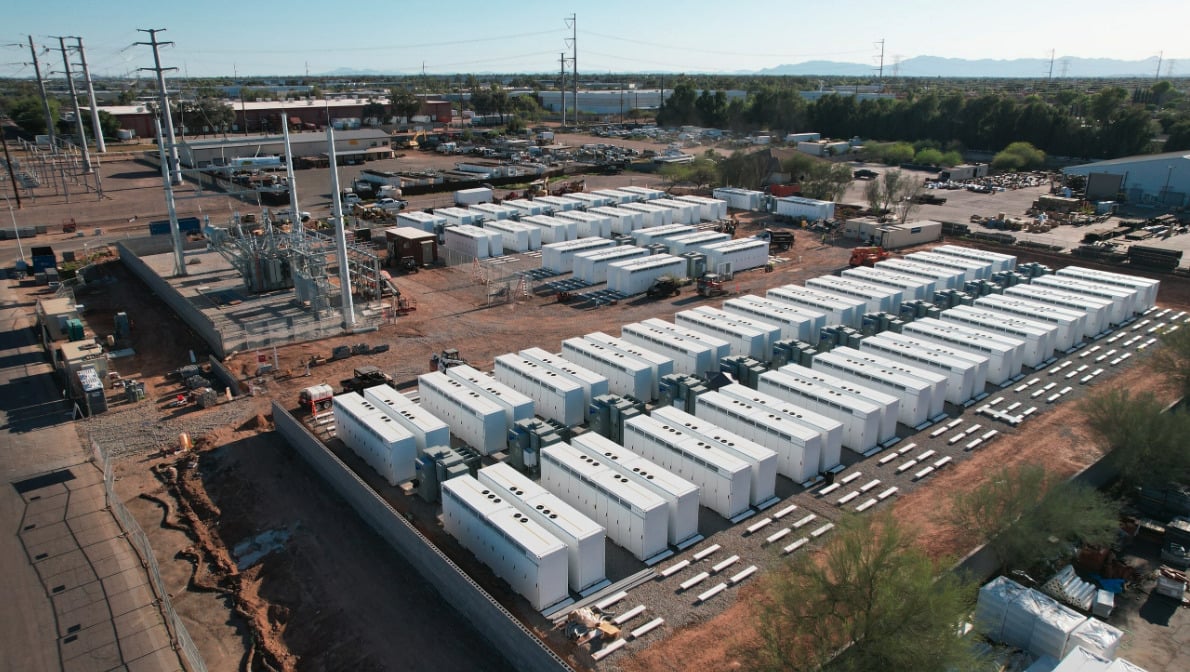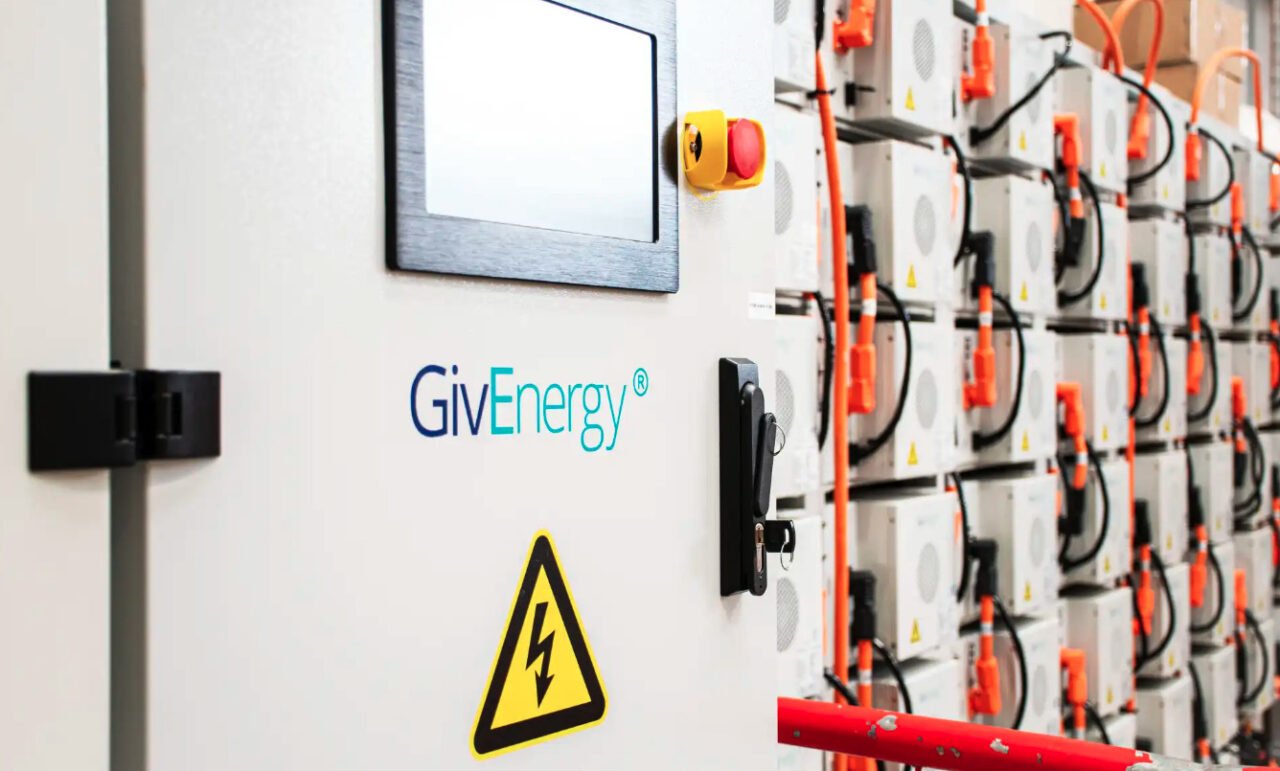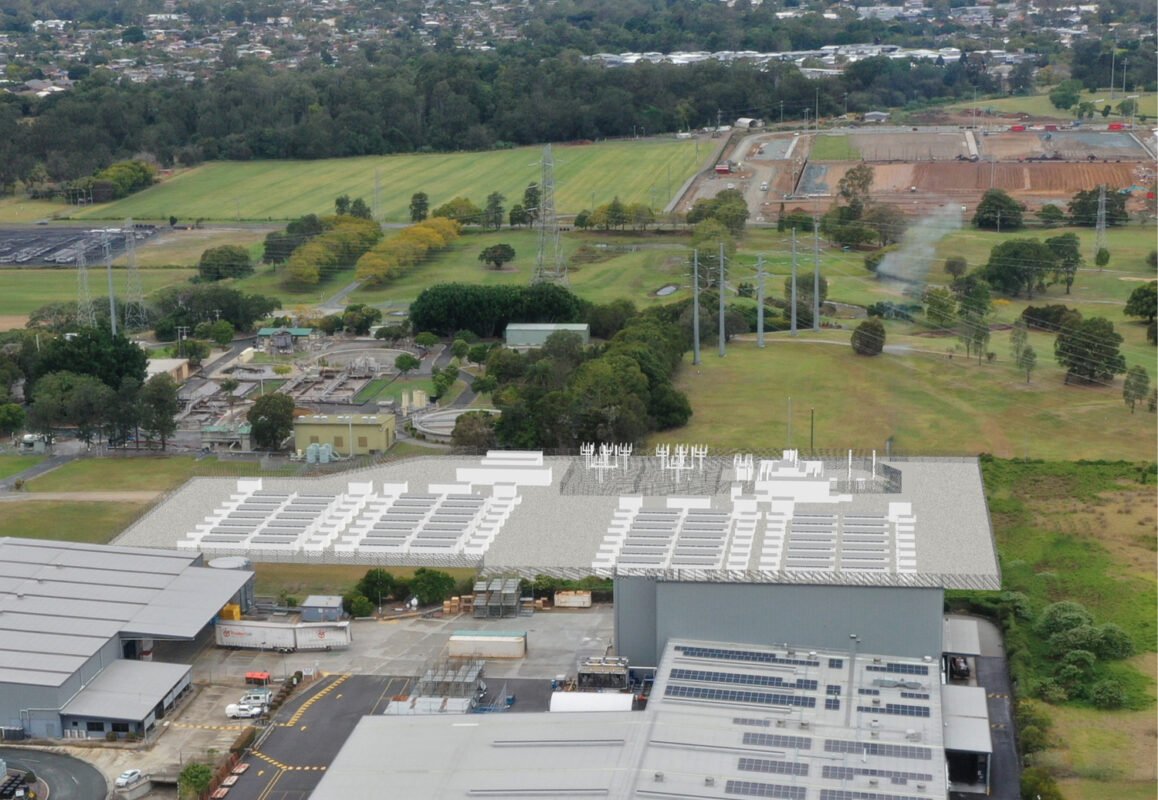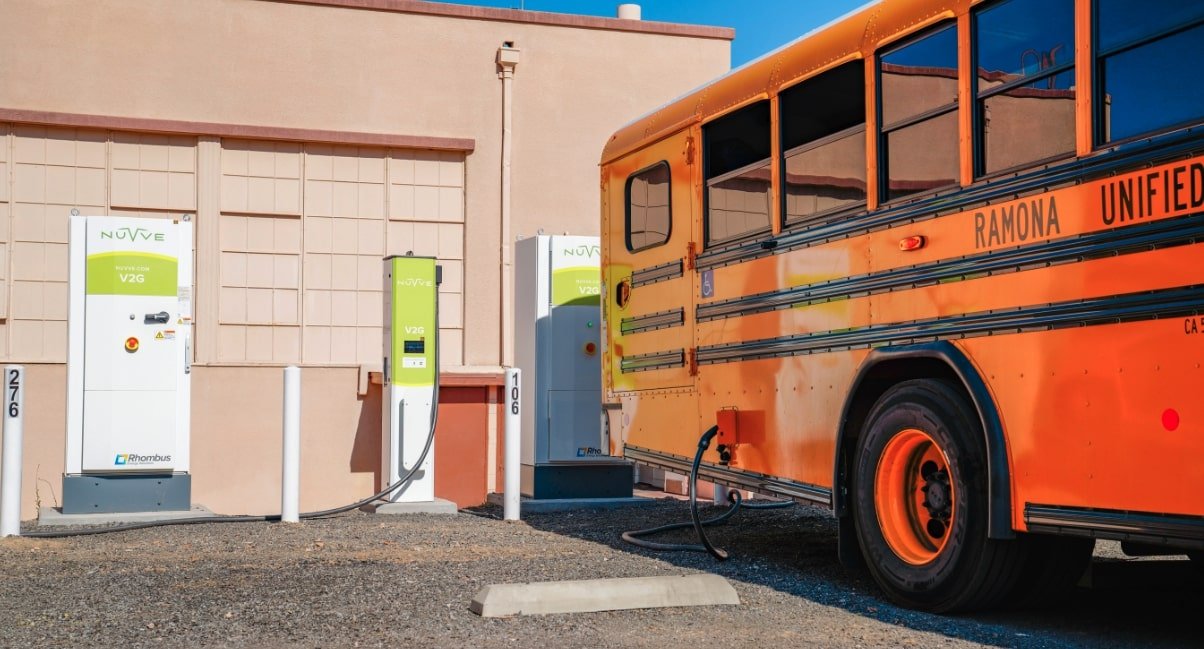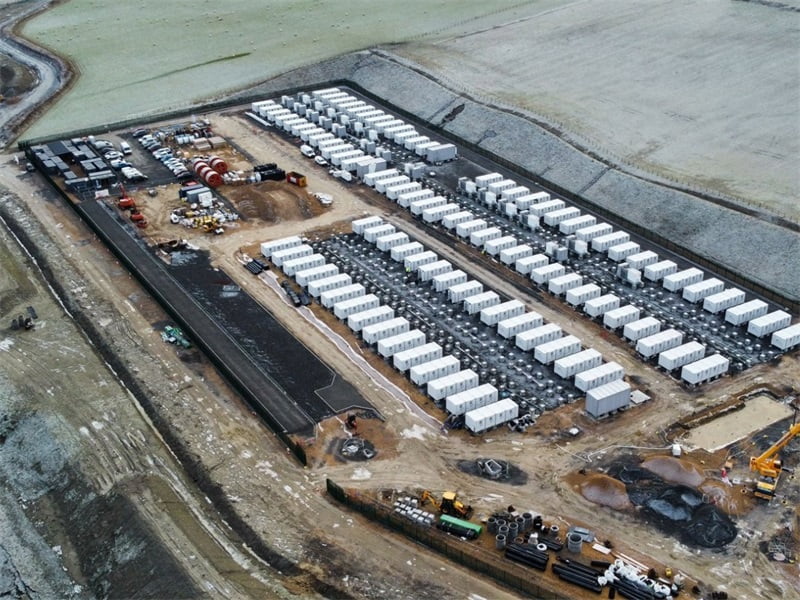The developer said that the project qualifies for Investment Tax Credits (ITC) under the Inflation Reduction Act (IRA), and energyRE has signed a ten-year power purchase agreement (PPA) with regional utility Dominion Energy South Carolina for power produced at Lone Star.
On top of the PPA, energyRe said that Belgian-headquartered chemical company Syensqo will purchase all of the Renewable Energy Certificates (RECs) generated by Lone Star Solar, which will offset 35% of the company’s US emissions from electricity purchases.
To see the full version of this article go to PV Tech.
Vanadium redox flow battery firm Invinity raising US$70 million, eyes direct investment in UK LDES projects
In addition, it intends to raise a placing with UK institutional investors for a minimum of £22 million via an ‘accelerated book build’ and another £6.6 million via an ‘open offer’, with the three fundraises all-in-all totalling £56.6 million. Company directors have the option to increase the £22 million placing in size.
Invinity’s CCO Matt Harper told Energy-Storage.news that of the total raised about £23 million would go to directly investing in projects in the UK, around £2 million to capital expansion of its manufacturing facilities and the remainder would be for working capital, including upgrading its supply chain.
The fundraise size is significant for the company, which only has a market capitalisation of £44.2 million at the time of writing, with its share price close to an all-time low at 23.19p, down around 70% from two years ago (note that the same can be said about many other listed energy storage technology firms).
Direct investment in UK projects to ‘kickstart’ market
Invinity manufactures and sells vanadium redox flow batteries (VRFB) for the grid-scale and commercial and industrial (C&I) markets, with manufacturing facilities in Canada and Scotland. The long-duration energy storage (LDES) technology can offer durations of up to 24-hours, beyond what lithium-ion typically can do cost-effectively.
However, Invinity and the wider LDES sector have struggled to commercialise their projects at the desired scale with most markets still not offering the energy-intensive revenue opportunities that LDES can best capture.
CEO of UK Infrastructure Bank John Flint alluded to this in a statement in the announcement: “However, the market of investors in more nascent longer-duration technologies like vanadium flow has developed more slowly than for lithium-ion batteries.”
“The customer CFO looks at our technology and says that it makes no more money today than a 1-hour lithium-ion battery,” Harper told Energy-Storage.news.
The new capital will be used to enable Invinity to take minority ownership stakes in UK LDES projects, a departure from its current role as solely the technology and maintenance (O&M) provider.
“What that part of the funding will do is give us a little bit of firepower to accelerate deployment of a small number of very large-scale LDES projects in the UK, that are bigger than anything we’ve ever done,” Harper said.
“The UK LDES Consultation draft rules set a minimum project size of 300MWh, and the biggest we’ve done in the UK is 5MWh. This funding will close the gap of commerciality of those projects.”
Harper also said that having ownership stakes in projects and ‘a seat in the operating room’ will give Invinity the data and experience it needs to help shape the conversation on how to maximise the long-term value of LDES in the energy market.
It aims to deploy about 100MWh of projects this way, mostly with developers that are already active in the UK energy storage market.
It follows a trend of select other LDES companies also moving into owning projects themselves, such as Energy Vault (Premium access).
Manufacturing Mistral to reach profitability
Harper also explained that the key to reaching net positive cash generation or profitability is scaling up the manufacturing of its latest generation VRFB product, Mistral, to get it out into the market.
VRFB is among the more long-standing long-duration energy storage (LDES) technologies, having been invented in the 1980s and its patents expiring in 2006. Invinity’s projects have received government financial support in the UK and the US, the latter most recently for a 24-hour duration project.
Invinity recently tied up with Taiwan-based industrial group Everdura for the latter to manufacture and distribute its Mistral product in the region using stacks provided by Invinity from its own manufacturing sites.
Energy-Storage.news’ publisher Solar Media will host the 2nd Energy Storage Summit Asia, 9-10 July 2024 in Singapore. The event will help give clarity on this nascent, yet quickly growing market, bringing together a community of credible independent generators, policymakers, banks, funds, off-takers and technology providers. For more information, go to the website.
BESS industry safety practises: Codes, standards and fire testing
As we have seen in numerous territories in the US and UK in particular, battery energy storage system (BESS) technology is sometimes perceived by local communities as a potential fire and even explosion hazard.
In this series, we have examined some of the things companies in the industry are doing to mitigate fire and explosion risk.
In the previous two instalments, we have spoken with Trina Solar executive president Helena Li about the role product design plays in ensuring safe operation, and with Accure CEO Kai-Philipp Kairies about the implementation of battery data analytics.
This time out, we speak with Wärtsilä senior development manager Mats Östman and product manager Chris Groves, who focus on the safety aspects of the company’s solutions.
‘Industry megatrends’: Bigger projects, higher energy densities
Even as recently as four years ago, a really big project might be in the ballpark of 100MWh, whereas today, it is fairly common in advanced markets to see projects that push the 1GWh threshold at a single site, Östman says.
Looking further back, “there was no real standardisation,” he says, with portfolios engineered on a project-by-project basis.
From around 2020, modular designs began to emerge on the market, arguably led by Tesla’s Megapack, but with others such as Wärtsilä’s own Gridsolv Quantum series representing more standard solutions delivered to sites with pre-installed batteries.
Since then, one of the other elements that has moved the industry along is the adoption of higher energy density solutions, with cells’ physical formats remaining largely the same but capacities moving from around 280Ah to more typically exceed 300Ah. Meanwhile 20-foot standard containers are coming in at 5MWh capacity or more.
These “industry megatrends,” as Östman describes them, mean that the products used have to be more reliable than ever before.
Testing for worst-case scenarios and the safety needs of AHJs
For example, one of Wärtsilä’s current product lineup, the Quantum High Energy (Quantum HE), uses 306Ah cells, and, like the other two Quantum products, Quantum and Quantum 2, a lot of safety testing has been done to bring them to market, Chris Groves says.
The company has long been vocal about the critical need for fire safety to be treated with the utmost seriousness for the energy storage market to grow, and more specifically, the need for fire testing to not just meet required standards but also to consider worst-case scenarios.
Groves says the company “took a lot of lessons” from large-scale fire tests, including adopting NFPA 68, the US National Fire Protection Association (NFPA) standard on explosion protection by deflagration venting of gases.
In most jurisdictions, compliance with NFPA 69, the standard on explosion protection systems, is required, but Wärtsilä decided to also add NFPA 68 compliance as an option.
Along with other new features, such as prefabricated firewalls that take the system’s fire rating from 60 minutes to 240 minutes, the company improved the strength of the door-locking mechanisms to meet NFPA 68.
Battery module-level fire testing. Image: ESRG.
Another industry standard test is UL9540A, which forces a cell into thermal runaway and assesses its risk of catching fire and propagating to other cells, racks and other components of the BESS.
However, while useful, UL9540A has some potential shortcomings, Groves says, which is one of the reasons why Wärtsilä carried out large-scale fire tests, essentially setting entire Quantum BESS units on fire.
“We don’t believe heating a single cell is representative of a worst-case scenario. For example, you had multi-cell failure during the fires that were seen last year and other incidents that happened during commissioning. You could have a forklift hitting a unit, you could have a lightning strike,” Groves says.
Minimal propagation could be seen in a module with a UL9540A test, leading stakeholders to conclude that the whole system would be safe in a thermal runaway event. However, Groves says the company introduced fire to the entire unit, thereby validating that unit-to-unit propagation would not occur.
It is understood that the UL950A test regime will be updated to include, among other things, multi-cell level, module level and unit-to-unit fire testing, along the lines of what Wärtsilä has been implementing already.
Education of stakeholders from public authorities to industry
Wärtsilä is part of a task force in the US examining UL9540A and NFPA 855, the latter being the main standard for the safe installation of energy storage systems.
Comprising certification agencies, authorities having jurisdiction (AHJs) and National Recognised Testing Laboratories (NRTLs) alongside industry players, the coalition of stakeholders will redesign tests and standards “along the lines of what AHJs want to see,” Groves says.
AHJs, which typically include local authorities such as town planning committees and fire departments, are essentially the gatekeepers between local communities and energy storage developers and have the final say on whether projects will proceed.
AHJs are becoming more aware of energy storage technologies and what a project involves, but at the same time, the industry needs to also be aware of what AHJs are looking for.
“A lot of it is around education. Many developers just have a checkbox: ‘What’s UL9540A? Do we have this?’” Groves says.
Developers should understand that project safety needs to be considered in a more “site-specific context,” in addition to having a system compliant with UL9540A.
“Do you have two access roads for the fire department? How wide are your roads? Can your roads support a fire truck? These are all questions that an AHJ wants to understand. When they come to a site, where do they access it? Where can they find the information? Where can they get a copy of the Emergency Response Plan (ERP)?”
Many AHJs are also seeking more training in energy storage system safety. Steps Wärtsilä has taken include creating a generic ERP adaptable for different projects in different markets.
“Fires in the industry are bad for everybody,” Groves says.
“They’re a black eye, and we need to be actively working as an industry to ensure that these developers and these residents near them are safe and comfortable with what’s been deployed.”
Plus Power secures US$82 million tax equity investment for Arizona BESS
Superstition and the larger, 250MW/1,000MWh Sierra Estrella project will both provide energy to Arizona utility Salt River Project (RSP) under long-term agreements following an all-source request for proposals (RFP) launched in 2021.
Those two were the last SRP needed to hit an 800MW owned or contracted mandated target for energy storage in its service area, primarily to manage peak demand periods in summer.
US$2 billion of financing for BESS by Plus Power recently
It follows a US$100 million tax equity investment Plus Power secured from Greenprint Capital earlier this year for a 200MW/400MWh project in Texas and a mammoth US$1.8 billion financing round for five projects including both Sierra Estrella and Superstition in October 2023.
Plus Power executive chairman Brandon Keefe told Energy-Storage.news at the time that the latter represented the company ‘bringing energy storage into the mainstream of capital markets’. It has several projects in construction or operation in Texas and Arizona and a total pipeline of 10GW of BESS overall.
It is perhaps noteworthy that these investments appear to have been done via traditional tax equity investment rather than new transferability mechanisms brought in under the Inflation Reduction Act which allow for a more straightforward buying and selling of tax credits associated with clean energy projects.
Energy-Storage.news interviewed the CFO of another BESS developer-operator, GridStor, about the pros and cons of using transferability instead of traditional tax equity in a recent interview (Premium access), which gave an idea of why buyers may still opt for the latter.
UBS and Captona formalise BESS joint venture
In related news, investors UBS Asset Management and Captona have closed an investment into a portfolio of four grid-scale BESS projects in Texas totalling 728MW/1,060MWh.
Although they gave few details about it, UBS said the deal is a ‘preferred equity investment’ which allows it to optimise the value of its tax credits without the need for a traditional tax equity partnership.
The unnamed projects range from 100-300MW in size and are set to come online in 2024.
UK residential market moving from solar-coupled to ‘battery first’, says GivEnergy
Roberts pointed out that not everyone has the space for rooftop solar, particularly low-income households in high-rise apartments. But everyone can take advantage of time-of-use tariffs increasingly being brought in by utilities, by charging the battery during off-peak periods and then using that power during peak periods.
He claimed this alone could lead to a payback of four or five years on the investment although other figures might suggest it would take longer.
The company manufactures battery storage and EV charging solutions for the residential and commercial and industrial (C&I) markets from its factory in China which it then sells into the UK market via distributors. Its flagship product is the All in One 6.0, lithium iron phosphate (LFP) 6-7.2kW/13.5kWh AC inverter-coupled home battery.
The shift towards a ‘battery first’ market may also be related to the phase out of feed-in-tariffs (FITs) for solar PV systems in 2019, covered extensively by our sister site Solar Power Portal.
UK market growth and VAT cut
As reported by Solar Power Portal last week, UK Microgeneration Certification Scheme (MCS) certified home battery installations rose 700% year-on-year in March 2024, exceeding 1,000 in one month for the first time. Roberts cautioned that this was mainly because the MCS only recently started counting figures.
The government exempting domestic batteries from VAT, effective February 1 2024, is boosting energy storage take-up, a technology that “has not yet been adequately put onto the political agenda,” he said.
“So, this move is a critical step in encouraging the adoption of sustainable technologies. It fosters greater energy self-sufficiency for households and represents an important (if overdue) step in the right direction,” Roberts said.
“Plus, if our own sales records at GivEnergy are anything to go by, the VAT relief is stimulating growth in the energy storage industry. Installers can now offer more competitive pricing to consumers for project completion. This, in turn, appears to be spurring increased demand for energy storage solutions, driving technological advancements and fostering job creation within the sector.”
There was a big boom in the home battery market was a few years ago, around the time of Russia’s invasion of Ukraine as people sought to insulate themselves from high energy prices, Roberts added.
“Now the big growth is in new builds, as there is more and more pressure on new build properties being insulated and electrified well rather than relying on gas,” Roberts said.
“Battery storage allows you to open up cheaper electricity rates to the people that need it most, so we’re working with a lot of social housing providers to enable people on the lowest salary bands to be able to afford that cheap energy.”
Smaller batteries like its 2.6kWh unit can be installed within flats with the right installation process, he added.
Roberts claimed that GivEnergy has a 35% share of the UK home battery market. The main thing needed for home battery take-up to increase is to more education about the benefits of battery storage within the consumer and installer community, he added.
Affordability
Roberts mentioned earlier the firm’s work with social housing providers to increase access amongst low-income households to battery storage.
Home batteries are still a relatively significant outlay for the majority of people. All In One currently retails for around £6,000+ (US$7,500) according to most Google search results.
The firm works with partners to provide 0% financing and leasing options for those who cannot afford the up-front payment.
We then asked Roberts about how falls in the prices of lithium-ion batteries globally was impacting this and whether those price falls would be passed on to consumers.
“As you see the prices go down, definitely. It’s something we’ve seen a lot more in solar panels than I would say batteries. But the battery market is competitive and we’ve seen some very good deals in the last few years, hopefully that continues.”
Manufacturing
GivEnergy is beginning to onshore its supply chain, last week opening a factory in Stoke, central England, which will assemble the C&I systems and then later on the EV charging.
The firm hopes to bring its home battery manufacturing to the UK in the next three years too but one big challenge is around getting access to the right land, ahead of developers.
Roberts also said there appears to be more willingness to support larger foreign companies building gigafactories in the UK than smaller UK-owned ones.
According to reports, Indian conglomerate Tata and Japanese automotive group Nissan recently received financial incentives to build gigafactories in the UK, for example.
Australia: Akaysha in AU$250 million debt deal, national tenders oversubscribed and 2GWh project contract awarded
Akaysha gets AU$250 million debt deal from banks
Akaysha Energy, the developer owned by global investment group Blackrock, has closed its debt deal with seven banks toward the financing of two grid-scale projects in Queensland which together will play a total 710MWh battery capacity into the National Electricity Market (NEM).
The money borrowed from banks CBA, DBS, ING, Mizuho, MUFG, Rabobank, and SMBC will be used to fund the construction costs of Akaysha’s Ulinda Park (150MW/300MWh) and Brendale (205MW/410MWh) BESS assets.
In addition to the three-year tenured portfolio facility more than AU$100 million in Letters of Credit have been agreed to support the developer’s security obligations on the projects.
As previously reported by Energy-Storage.news Akaysha took its Final Investment Decision (FID) on Brendale in December last year, and received the key Generator Performance Standard (GPS) certification for connecting Ulinda Park to the NEM around that time, having already taken the FID for it a couple of months earlier.
Brendale will be equipped with BESS solutions supplied by system integrator and manufacturer Powin Energy—which just sealed a 12GWh lithium iron phosphate (LFP) cell supply deal with China’s Rept Battero—while Tesla Megapack units will be used at Ulinda Park.
Akaysha Energy became widely known in the market as the developer behind the landmark 1,680MWh Waratah Super Battery in New South Wales, currently in construction with Powin as its BESS integrator. Its other projects in development include 200MW/800MWh Elaine BESS project in Victoria, and the 100MW/200MWh Palmerston BESS in Tasmania, receiving planning approvals for both projects around the start of this year.
Capacity Investment Scheme already ‘massively oversubscribed’
The first wave of dispatchable renewable energy solicitations under the Commonwealth government’s Capacity Investment Scheme (CIS) has seen enormous developer interest.
Government energy minister Chris Bowen said in a speech to the Energy Users Association of Australia yesterday (1 May) that the first tenders, being held for Victoria and South Australia, have been “massively oversubscribed”.
Bids for 19,000MW of potential energy storage projects were received, with the CIS only seeking an initial 600MW to back renewable energy development in the two states, which, as Bowen pointed out, was 32 times the targeted procurement.
Overseer AEMO Services, a branch of the Australian Energy Market Operator (AEMO), has shortlisted projects which will proceed towards selection.
The Victoria-South Australia tender is an initial pilot for the nationwide scheme which seeks to get 32GW of new renewable energy capacity deployed by 2030, including 9GW of firm dispatchable resources i.e., resources backed with energy storage. A similar initial 500MW tender will open in Western Australia later this year.
Bowen said his department would release more details in the coming week. The CIS has been hailed as a transformative move by the government and will be administered by individual states, underwriting long-term revenues for projects while allowing developers and project owners to play into merchant opportunities in the NEM.
“We expect that projects will demonstrate benefits for local industry, communities, jobs and First Nations, as well as for the broader energy system and users,” Bowen said.
“As well as delivering these benefits, it is worth noting the Capacity Investment Scheme is specifically designed to provide enough support to allow projects to operate sustainably in an environment of low energy prices.”
Key contract for 2GWh Collie BESS
A key contract award has been made for Australia’s largest BESS project to date, the Collie BESS (CBESS1) in Western Australia (WA).
SCEE Electrical, headquartered in Perth, has been awarded an AU$160 million contract for civil, electrical, and major equipment installation works for the 500MW/2,000MWh BESS project.
The award was made by Synergy, a generator and energy retailer (‘gentailer’) owned by the Western Australia state government.
The government announced the deal today (2 May), with SCEE set to install and commission the site’s 640 containerised BESS units, 160 inverters and 220km of high-voltage cabling, as well as infrastructure works.
Set to come online in late 2025, the project is one of three that Synergy is delivering on behalf of the state government, and will be joined in the Collie region by the privately-owned project in development by French independent power producer (IPP) Neoen.
Neoen’s own Collie battery system has an initial build phase of 219MW/877MWh, which is already underway, and it could eventually be even bigger than Synergy’s project, at 2.2GWh, with subsequent phases.
The projects will all connect to Western Australia’s Wholesale Electricity Market (WEM) via its South West Interconnected System (SWIS) grid, given that the region is far from the NEM-connected states in Central, Southern and Eastern Australia.
Energy-Storage.news’ publisher Solar Media will host the 1st Energy Storage Summit Australia, on 21-22 May 2024 in Sydney, NSW. Featuring a packed programme of panels, presentations and fireside chats from industry leaders focusing on accelerating the market for energy storage across the country. For more information, go to the website.
US vehicle-to-grid specialist Nuvve partners with Chinese battery manufacturer Great Power
The US company will be Great Power’s preferred partner in energy management and flexibility aggregation, while Great Power will supply Nuvve-branded pre-validated battery energy storage system (BESS) solutions to the market.
The solutions will be integrated with Nuvve’s aggregation platform GIVe (the capitalised letters stand for Grid Integrated Vehicle) and its energy management system (EMS). The integrated offering is expected to be ready by the third quarter of 2024.
Like other V2G technologies, GIVe uses bidirectional charging to turn parked EVs into grid assets. This enables them to help utilities manage peak demand and provide ancillary services such as frequency response.
It also means the vehicle driver or owner can earn revenues that, in turn, help lower their cost of ownership.
At the same time, V2G can enable increased adoption of renewable energy through charging EVs when solar PV or wind power is cheapest and most abundant and discharging their power to meet shortfalls in renewable generation.
By partnering with Great Power, Nuvve can extend those capabilities to EV charger units, putting stationary batteries at chargepoints.
The partners aim to offer a complete package of EV infrastructure, stationary battery storage and energy management, working on a project pipeline in North America, Europe and Asia, along with some of Nuvve’s existing projects at school districts in California.
‘Significant cost savings’ projected by company’s modelling
V2G technology, therefore, offers promise in terms of optimising energy usage, reducing network management costs and aiding the decarbonisation of the grid.
However, barriers to its adoption include the difficulty of accommodating owners’ charging habits around the grid’s needs and the reluctance of some EV owners to allow their utility or grid operator to manage their batteries.
That is one reason why V2G providers such as Nuvve often initially target fleet vehicles, such as delivery trucks or school buses. That strategy has the advantage of enabling access to multiple vehicles, which will be operated on set schedules and with larger battery capacities than individual passenger vehicles.
For example, at a Nuvve project in San Diego, eight new electric school buses and Nuvve DC fast chargers were qualified to generate revenues for Ramona Unified School District through enrollment in utility SDG&E’s Emergency Load Reduction Program (ELRP) in 2022.
“Our techno-economic modelling demonstrates significant energy savings from Nuvve’s total energy management for customers, particularly in areas with high energy rates or demand charges,” Hamza Lemsaddek, Nuvve’s VP of technology and its AI joint venture Astrea said in a press release yesterday.
“In the San Diego area, a typical school district purchasing energy from the local utility could save up to 40% or more on their bill by adding in a single Nuvve 400kWh BESS. V2G technology and grid services like Demand Response increase those savings.”
The company is also targeting other opportunities, such as a partnership with residential virtual power plant (VPP) specialist Swell Energy in the US, a deal with roadside service station operator Circle K to aggregate EV chargers and stationary BESS to play into Nordic frequency regulation markets in Norway and Denmark.
In Asia, Nuvve has also signed a deal to play stationary storage systems into Japan’s power markets, and with a local partner recently won an RFP held by the grid operator and utility of Taiwan, Taipower, to deploy the island’s first bidirectional charging hub.
As of the end of last year, the startup had just over 25MW of assets under management worldwide.
Some policymakers and regulators are becoming aware of the V2G potential and sought to remove barriers, with Maryland becoming the first US state to require utilities to allow EVs to connect to the distribution grid earlier this year.
Great Power meanwhile was established in 2001. Its main business is the manufacturing of lithium-ion (Li-ion) batteries for stationary storage applications, although it has also recently begun production of sodium-ion (Na-ion) batteries.
Great Power has nine production centres. Late last year it began construction on a gigafactory in Qingdao, China, claimed to be among the first to meet ‘zero carbon standards,’ and with an initial 12GWh per annum annual production capacity, capable of ramping up to 36GWh per year. It is also set to open its first factory outside of China in Vietnam during this year.
Gresham House UK BESS revenues recover after 2023 slump and £100 million loss
The company confirmed 2023’s ‘weak revenue environment’ with a 38% fall in revenues to £38.7 million (US$48 million), a 47% fall in EBITDA and the fund swung to a £110 million loss from a £217 million profit the prior year. Net Asset Value (NAV) per share fell 17% to 129.07p.
GRID had 690MW/788MWh operational by the end of 2023, a roughly 17% market share based on the 4GW/4.9GWh of grid-scale BESS online according to Solar Media Market Research figures.
The main reason revenues fell for GRID and all other UK BESS owners and operators in 2023 is because of falling prices in the ancillary service markets.
However, 2024 has marked a recovery from this as shown in a trading update a few days before its full-year results. Average revenues for its operational BESS went from £39,500/MW/year in February 2024 to £77,900/MW/year for the first half of April 2024, a nearly 100% increase.
It has also grown its operational portfolio to 740MW/876MWh with the energisation of the 50MW York project while two more similarly sized ones are coming online ‘imminently’, it said.
Revenues have improved thanks to the launch of a new ancillary service, the Balancing Reserve (BR), transmission system operator (TSO) National Grid ESO increasing the use of BESS in the Balancing Market (BM) and improvements in wholesale market energy trading opportunities.
The latter two are energy-intensive activities and their increase ties into a wider trend of moving away from mainly getting revenues from power-intensive activities like ancillary services. Capacity Market (CM) and energy trading revenues went from 18% of the total in 2022 to 46% of the total in 2023 for GRID.
GRID is set to reach over 1GW of operational capacity by the end of 2024, and its average duration will move from 1.2 hours to 1.6 hours as part of that move towards more energy-intensive activity. GRID has 23 operational BESS projects ranging from the 5MW/8MWh Wolves project, its smallest, to the 50MW/100MWh Grendon 1 project, its largest.
Last year, it announced plans to invest in solar-and-storage projects in California, US, but the company has since deferred these plans and its project there, called Iliad, no longer appears in its pipeline.
G7 nations set 1500GW global energy storage target for 2030
The deployment of energy storage at that scale will transform the availability of renewable energy resources to better compete with fossil fuels and strengthen energy security, the US Department of Energy (DOE) said in a ‘US-UK Strategic Energy Dialogue 2024: Joint Statement’. The G7 comprises the UK, US, France, Germany, Italy, Canada and Japan.
Two hundred countries agreed at COP28 last year to triple renewable energy capacity to 11TW by 2030, as reported by our sister site PV Tech.
Note that the G7 does not include China, which is currently the world’s largest energy storage market by annual deployments by some distance, adding around 22GW/49GWh in 2023, ahead of the US’ 8.7GW/26GWh, the next-largest.
The 1500GW figure covers all energy storage technologies including battery energy storage system (BESS), pumped hydro energy storage (PHES) as well as hydrogen and water-based technologies.
The 1500GW target is double what BloombergNEF has forecast is scheduled to be online based on current deployment pipelines, as reported by Energy-Storage.news this week.
Energy-Storage.news’ publisher Solar Media will host the 1st Energy Storage Summit Australia, on 21-22 May 2024 in Sydney, NSW. Featuring a packed programme of panels, presentations and fireside chats from industry leaders focusing on accelerating the market for energy storage across the country. For more information, go to the website.
Energy-Storage.news’ publisher Solar Media will host the 2nd Energy Storage Summit Asia, 9-10 July 2024 in Singapore. The event will help give clarity on this nascent, yet quickly growing market, bringing together a community of credible independent generators, policymakers, banks, funds, off-takers and technology providers. For more information, go to the website.
Wärtsilä: 75% energy storage sales decrease ‘due to periodisation of revenue recognition’
It reported an order intake of €236 million (US$251.84 million) for the quarter, down from €257 million in Q1 2023, although this was considerably higher than 2022’s Q1 order intake of just €72 million. Meanwhile, net sales were at €62 million, versus €252 million in the first quarter of 2023 and €134 million in Q1 2022.
Wärtsilä said the 75% decrease in net sales was largely attributable to the company applying periodisation to its accounting, with revenues from various projects in its portfolio set to be recognised later in the year based on certain delivery and completion milestones.
CEO Håkan Agnevall said that with some individual energy storage projects representing large orders in themselves, any movement of milestones into future quarters “can have quite a big impact” on sales. It did not indicate any significant challenges on supply chain or the ability of the company to execute energy storage projects, he said.
CEO Agnevall said that the low sales figure of €62 million is “not the new normal” of expectations in energy storage sales and said that much higher figures will likely be reported later this year, in response to a question from a Deutsche Bank analyst on a call to explain results.
‘No updates’ on strategic review
The company is conducting a strategic review of ES&O, and has previously said it is considering all options, including retaining ownership, seeking outside investment, or divesting the business unit completely.
Energy storage, while a profitable business line for the company, has a much lower margin than its activities in marine and balancing engine power plants. Analysts and industry experts have discussed the possibility that Wärtsilä shareholders may not want to see the group’s margins diluted.
That strategic review was initiated in October 2023, and one analyst asked how this was progressing and why it was “taking so long.”
Wärtsilä’s CEO and CFO said there were no updates on the schedule, with the review still ongoing and “all potential alternatives” still being considered.
Agnevall pointed out that the company is continuing to invest in energy storage, with the recent launch of its latest modular grid-scale battery energy storage system (BESS) product, Quantum 2, one of the highlights of the quarter. Quantum 2 is a high energy density solution aimed at larger projects than Wartsila’s other modular BESS solutions, Quantum and Quantum High Energy (Quantum HE).



